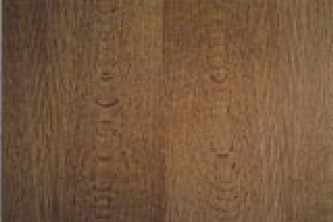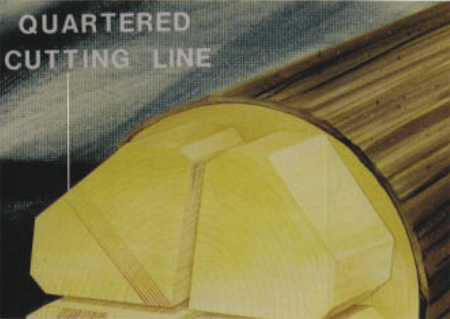 |
 |
|||||||
Quarter Slicing |
|
|
In order to specify veneer that has very straight grain without the “flame” pattern, in most cases Quarter Sliced or Quartered veneer is specified. The quarter of a log is mounted on a plate so that the growth rings are perpendicular to the plate, and the plate is raised and lowered against the blade in a direction radial to the center of the log. Quartered leaves cut consecutively are narrower than plain sliced and typically contain straighter grain. The cut requires the largest diameter logs, usually from tropical species. However, quartered white oak is often sliced specifically for its appearance of “flake,” which is actually created by the veneer knife bisecting radial tubules in the tree structure, called medullary rays. In most species these medullary rays are so small as to be unnoticed in the grain pattern, but in the oak family they produce the distinct flake marking. The ray flake should not be considered a defect, but rather a personal aesthetic choice on the part of the designer. Quartered cherry, ash, maple, and red oak are usually the portions of a flat cut log where the heartwood is defective or is wide enough to be clipped and used as quarters. Quarter cut leaves can easily be sequenced and matched.
Typical quartered grain pattern. |
|
|
|
|

